Building upon April’s multicultural book review column, we highlight books which focus on movement in literal and figurative ways. Our global communities are continually shifting as people, ideas, and cultural practices enter and exit geographic locales. The books reviewed this week span the continuum of life and time. They highlight physical migration, illustrate the ramifications of social and political movements (or lack thereof), document ideological shifts, and celebrate the moving effects of creativity. International books recently published in the U.S. are also included to broaden our understandings of books read around the world.
GRADES K-3
Bar-el, Dan. (2013). Dream boats. Illus. Kirsti Anne Wakelin. Vancouver, Canada: Simply Read Books.
 Just as “a picture is worth a thousand words,” dreams enable us to embark on wondrous adventures. Readers of this picture book will be captivated by the journeys of legend and lore as young children around the world reunite with their culture, tradition, history, and heritage. These youth meet Viracocha near the Andes Mountains; Ganesh near Mumbai; Bear Spirits and Baba Yaga near St. Petersburg, Russia; Obatala alongside the Niger River, among others. They also engage in spontaneous “play dates” with each other. Their adventures become “stories woven into their blankets” and their memories become cognitive maps of past and future. The poetic vignettes and lush, detailed mixed media illustrations will enchant readers of all ages. For those with a more pragmatic purpose for reading, the end pages also offer detailed instructions of how to create one’s own dream boat.
Just as “a picture is worth a thousand words,” dreams enable us to embark on wondrous adventures. Readers of this picture book will be captivated by the journeys of legend and lore as young children around the world reunite with their culture, tradition, history, and heritage. These youth meet Viracocha near the Andes Mountains; Ganesh near Mumbai; Bear Spirits and Baba Yaga near St. Petersburg, Russia; Obatala alongside the Niger River, among others. They also engage in spontaneous “play dates” with each other. Their adventures become “stories woven into their blankets” and their memories become cognitive maps of past and future. The poetic vignettes and lush, detailed mixed media illustrations will enchant readers of all ages. For those with a more pragmatic purpose for reading, the end pages also offer detailed instructions of how to create one’s own dream boat.
—Jennifer M. Graff, The University of Georgia
Nastanlieva, Vanya. (2013). The new arrival. Vancouver, Canada: Simply Read Books.
 Using a cross-hatch style and warm color palette, and perhaps inspired by her own immigration experiences, Bulgarian children’s book creator, Vanya Nastanlieva, offers young readers a heart-warming and humorous story about making friends. Sam, an endearing hedgehog, embarks on a journey to find a new home. While his new home is idyllic in many ways, it’s missing one critical element: friends. Sam looks everywhere for friends of any kind and endures the extremities of weather during his search. He even sacrifices much of his “hair” (quills) to affix “Wanted Friend” notices to the forest trees. Unbeknownst to him and just before he gives up hope, his forest mates organize a party to welcome him into their community. The asides spoken by the forest mates throughout the book provide the readers with assurances that everything will be well in the end. Making friends, a never-ending dilemma for people of all ages, is one story which needs repeating, and this book is a welcome addition.
Using a cross-hatch style and warm color palette, and perhaps inspired by her own immigration experiences, Bulgarian children’s book creator, Vanya Nastanlieva, offers young readers a heart-warming and humorous story about making friends. Sam, an endearing hedgehog, embarks on a journey to find a new home. While his new home is idyllic in many ways, it’s missing one critical element: friends. Sam looks everywhere for friends of any kind and endures the extremities of weather during his search. He even sacrifices much of his “hair” (quills) to affix “Wanted Friend” notices to the forest trees. Unbeknownst to him and just before he gives up hope, his forest mates organize a party to welcome him into their community. The asides spoken by the forest mates throughout the book provide the readers with assurances that everything will be well in the end. Making friends, a never-ending dilemma for people of all ages, is one story which needs repeating, and this book is a welcome addition.
—Ying Cui & Jennifer M. Graff, The University of Georgia
Young, Jessica. (2013). My blue is happy. Illus. Catia Chien. Boston, MA: Candlewick Press.
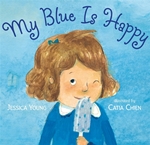 A young girl’s discovery that she and her sister interpret the color blue differently leads to her realization that divergent beliefs are part and parcel of life. Intrigued by her discovery, the girl engages in a fascinating exploration of the meaning of colors within her community. Catia Chien’s bright and captivating illustrations go beyond the verbal narrative and invite young readers to discover many interesting details that fulfill our daily routine. This story is a playful reminder about how we can not only coexist in difference, but also how the world is enriched by difference. My Blue is Happy might become a classroom favorite and a gateway to discussions about colors and their symbolism from both individual and cultural perspectives.
A young girl’s discovery that she and her sister interpret the color blue differently leads to her realization that divergent beliefs are part and parcel of life. Intrigued by her discovery, the girl engages in a fascinating exploration of the meaning of colors within her community. Catia Chien’s bright and captivating illustrations go beyond the verbal narrative and invite young readers to discover many interesting details that fulfill our daily routine. This story is a playful reminder about how we can not only coexist in difference, but also how the world is enriched by difference. My Blue is Happy might become a classroom favorite and a gateway to discussions about colors and their symbolism from both individual and cultural perspectives.
—Oksana Lushchevska, The University of Georgia
Yum, Hyewon. (2013). This is our house. New York, NY: Frances Foster Books.
 This is Our House is a story about three generations of one family. Following the young girl protagonist’s narrative, readers learn about things that are cherished by her family: their house, their street, and the trees, among other items. Readers, however, might notice that the house is itself a strong and firm character in the book. Its doors, steps, stairs, and rooms relate to a time when the girl’s grandparents arrived from “far away with just two suitcases” (unpaged). Page by page, the canvas of immigrant life unfolds; they settle in the house and area, and their children and, then, grandchildren are born. Thus, in this short and vivid story, Yum manages to cover many details about how a house becomes a home with her vibrant mixed-media illustrations and the child-like narrative. After using this book for a read-aloud in the classroom, teachers might engage young learners in a discussion about the history of the origins of their own families.
This is Our House is a story about three generations of one family. Following the young girl protagonist’s narrative, readers learn about things that are cherished by her family: their house, their street, and the trees, among other items. Readers, however, might notice that the house is itself a strong and firm character in the book. Its doors, steps, stairs, and rooms relate to a time when the girl’s grandparents arrived from “far away with just two suitcases” (unpaged). Page by page, the canvas of immigrant life unfolds; they settle in the house and area, and their children and, then, grandchildren are born. Thus, in this short and vivid story, Yum manages to cover many details about how a house becomes a home with her vibrant mixed-media illustrations and the child-like narrative. After using this book for a read-aloud in the classroom, teachers might engage young learners in a discussion about the history of the origins of their own families.
—Oksana Lushchevska, The University of Georgia
GRADES 4-6
Leyson, Leon, Harran, Marilyn J., & Leyson, Elisabeth B. (2013). The boy on the wooden box. New York, NY: Atheneum Books for Young Readers.
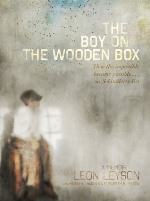 This memoir from one of the young children saved by Oskar Schindler during World War II helps readers better understand how one person can make a significant difference in the world. Leon Leyson was born Leib Lejzon, the youngest of five children in a loving, working-class, Jewish family living in Narweka, Poland. While Leyson enjoyed the first decade of his life, he began experiencing the horrific consequences of prejudice and the persecution of Jews at the age of ten. The majority of this memoir details how Leon, his family, and friends endured the horrors of living in Jewish ghettos and working in concentration camps, even with the continued support of Schindler. Leyson’s stoicism, as conveyed through his matter-of-fact tone, does not diminish the emotional impact of his story. Photographs and an afterword by his wife and children, complement this gripping tale of past atrocities and emphasize the need for survivors’ stories to be told and retold so as to not forget. Some educators and parents might want to reserve this book for early middle school readers due to the content.
This memoir from one of the young children saved by Oskar Schindler during World War II helps readers better understand how one person can make a significant difference in the world. Leon Leyson was born Leib Lejzon, the youngest of five children in a loving, working-class, Jewish family living in Narweka, Poland. While Leyson enjoyed the first decade of his life, he began experiencing the horrific consequences of prejudice and the persecution of Jews at the age of ten. The majority of this memoir details how Leon, his family, and friends endured the horrors of living in Jewish ghettos and working in concentration camps, even with the continued support of Schindler. Leyson’s stoicism, as conveyed through his matter-of-fact tone, does not diminish the emotional impact of his story. Photographs and an afterword by his wife and children, complement this gripping tale of past atrocities and emphasize the need for survivors’ stories to be told and retold so as to not forget. Some educators and parents might want to reserve this book for early middle school readers due to the content.
—Jennifer M. Graff, The University of Georgia
Williams-Garcia, Rita. (2013). P. S. be eleven. New York, NY: Amistad.
 Rita Williams-Garcia delights readers with the sequel to her award-winning novel, One Crazy Summer (2011). Upon returning to Big Ma and Pa in Bedford-Stuyvesant, New York, Vonetta, Fern, and Delphine continue to explore the wonders and complexities of growing up and desiring independence while remaining sheltered within the cocoon of their community. Informed by their summer spent with their mother, Cecile, in Oakland, California, all three sisters continue to negotiate their roles as sisters, family members, and citizens of the world. The girls are excited by the return of Uncle Darnell from Vietnam, yet disturbed by his personality change. They also experience a redefinition of family when their father weds Marva Hendrix, a younger woman who seems on the surface to be the antithesis of Cecile. Such feelings are compounded by Delphine’s desire for a mother who expresses her love in a way Cecile does not. Young readers will definitely relate to episodes of friendships tinged with friction and sibling squabbles. Throw some Tina Turner and The Jackson 5 into the mix and you have a winner for all ages.
Rita Williams-Garcia delights readers with the sequel to her award-winning novel, One Crazy Summer (2011). Upon returning to Big Ma and Pa in Bedford-Stuyvesant, New York, Vonetta, Fern, and Delphine continue to explore the wonders and complexities of growing up and desiring independence while remaining sheltered within the cocoon of their community. Informed by their summer spent with their mother, Cecile, in Oakland, California, all three sisters continue to negotiate their roles as sisters, family members, and citizens of the world. The girls are excited by the return of Uncle Darnell from Vietnam, yet disturbed by his personality change. They also experience a redefinition of family when their father weds Marva Hendrix, a younger woman who seems on the surface to be the antithesis of Cecile. Such feelings are compounded by Delphine’s desire for a mother who expresses her love in a way Cecile does not. Young readers will definitely relate to episodes of friendships tinged with friction and sibling squabbles. Throw some Tina Turner and The Jackson 5 into the mix and you have a winner for all ages.
—Jennifer M. Graff, The University of Georgia
GRADES 7-8
Crossan, Sarah. (2013). The weight of water. New York, NY: Bloomsbury.
 This contemporary fiction novel narrates the transnational escapades of Kasienka and her mother as they search for Kasienka’s “missing father." Although Kasienka understands that her “tata” ran away from them, she abides by her mother’s decision to remain in England until they find him. At school, Kasienka goes through all of the misfortunes and turbulence of being a newcomer. She is often bullied; however, her athleticism as a swimmer helps her acclimate to the culture of her new community, Coverty.
This contemporary fiction novel narrates the transnational escapades of Kasienka and her mother as they search for Kasienka’s “missing father." Although Kasienka understands that her “tata” ran away from them, she abides by her mother’s decision to remain in England until they find him. At school, Kasienka goes through all of the misfortunes and turbulence of being a newcomer. She is often bullied; however, her athleticism as a swimmer helps her acclimate to the culture of her new community, Coverty.
The hallmark of The Weight of Water lies in its narrative. Written in free verse, the novel communicates all the tension and emotional unbalance that Kasienka and her mother experience. Since the title was first published in the UK, it will definitely serve as an essential book for developing global awareness. To deepen the discussion on the immigration theme The Weight of Water might be paired with Thanhha Lai’s (2011) free verse novel, Inside Out and Back Again.
—Oksana Lushchevska, The University of Georgia
Matti, Truus. (2013). Mister Orange. Trans. Laura Watkinson. New York, NY: Enchanted Lion Books.
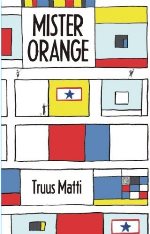 Twelve-year-old Linus Muller is proud of his brother Albie’s decision to fight in WWII. The idea that Albie will become a fearless hero fighting for justice, like his favorite Action Comics character, Mister Superspeed, fascinates Linus. He imagines his brother bravely and tirelessly fighting Hitler and the Nazis. Then, he meets “Mr. Orange,” a mysterious immigrant from England. Mr. Orange, also known as artist Piet Mondrian (1872-1944), shares with Linus the destructive nature of war on all aspects of life. Through these conversations, Linus starts to understand that his brother is not doing a heroic deed but, rather, is struggling to stay alive. When Mr. Orange passes away, Linus learns that he is the founder of a new trend in art: neoplasticism. Mr. Orange’s final work “Broadway Boogie-Woogie” helps Linus to see the colors of the future, which, of course, for the contemporary generation, is the past. Mister Orange is written by a Dutch writer whose novel Departure Time (2010) became a 2011 Batchelder Honor Book. The text is masterfully translated by Laura Watkinson. The book also includes some information about Piet Mondrian.
Twelve-year-old Linus Muller is proud of his brother Albie’s decision to fight in WWII. The idea that Albie will become a fearless hero fighting for justice, like his favorite Action Comics character, Mister Superspeed, fascinates Linus. He imagines his brother bravely and tirelessly fighting Hitler and the Nazis. Then, he meets “Mr. Orange,” a mysterious immigrant from England. Mr. Orange, also known as artist Piet Mondrian (1872-1944), shares with Linus the destructive nature of war on all aspects of life. Through these conversations, Linus starts to understand that his brother is not doing a heroic deed but, rather, is struggling to stay alive. When Mr. Orange passes away, Linus learns that he is the founder of a new trend in art: neoplasticism. Mr. Orange’s final work “Broadway Boogie-Woogie” helps Linus to see the colors of the future, which, of course, for the contemporary generation, is the past. Mister Orange is written by a Dutch writer whose novel Departure Time (2010) became a 2011 Batchelder Honor Book. The text is masterfully translated by Laura Watkinson. The book also includes some information about Piet Mondrian.
—Oksana Lushchevska, The University of Georgia
Sandler, Martin W. (2013). Imprisoned: The betrayal of Japanese Americans during World War II. London, UK: Walker Books.
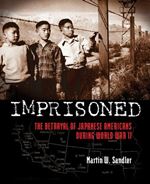 Through engaging and insightful perspectives, Imprisoned reveals important, and perhaps unknown, details about the horrific events involving the internment of Japanese Americans following the attack on Pearl Harbor. Selecting information from extensive, previously unpublished interviews and oral histories with Japanese American survivors of internment camps, Martin W. Sandler expertly crafts an in-depth narrative of their lives before, during their imprisonment, and after their release. The author also includes a lengthy and moving section about the young Japanese Americans who served in the military in a variety of capacities, from actual combat to intelligence and translation services. Ironically, while these brave soldiers were battling prejudice and tyranny overseas, their families and friends were experiencing both at home. Extensive use of photographs furthers this gripping narrative. These photographs tell their own stories and illustrate a range of emotions often unattainable through words. This is a must-have nonfiction book for classroom and personal libraries.
Through engaging and insightful perspectives, Imprisoned reveals important, and perhaps unknown, details about the horrific events involving the internment of Japanese Americans following the attack on Pearl Harbor. Selecting information from extensive, previously unpublished interviews and oral histories with Japanese American survivors of internment camps, Martin W. Sandler expertly crafts an in-depth narrative of their lives before, during their imprisonment, and after their release. The author also includes a lengthy and moving section about the young Japanese Americans who served in the military in a variety of capacities, from actual combat to intelligence and translation services. Ironically, while these brave soldiers were battling prejudice and tyranny overseas, their families and friends were experiencing both at home. Extensive use of photographs furthers this gripping narrative. These photographs tell their own stories and illustrate a range of emotions often unattainable through words. This is a must-have nonfiction book for classroom and personal libraries.
—Ying Cui, The University of Georgia
GRADES 9-12
Joseph, Lynn. (2013). Flowers in the sky. New York, NY: HarperTeen.
 In this contemporary fiction novel, fifteen-year-old Nina Perez, known as the “flower girl” in her hometown of Samana, departs from the Dominican Republic to New York City. Although Nina does not want to leave the town where she grows flowers and watches the whales, her mother insists on this trip. Her mother is sure that Nina’s older brother, Darrio, will take good care of her, and one day, she would have a better life in America. However, as Nina discovers upon arriving in New York, Darrio has been incarcerated. Fortunately, a barber, Luis, and Senora Rivera help Nina out. Nina ultimately decides to stay in New York to not only help Darrio but also build a new life.
In this contemporary fiction novel, fifteen-year-old Nina Perez, known as the “flower girl” in her hometown of Samana, departs from the Dominican Republic to New York City. Although Nina does not want to leave the town where she grows flowers and watches the whales, her mother insists on this trip. Her mother is sure that Nina’s older brother, Darrio, will take good care of her, and one day, she would have a better life in America. However, as Nina discovers upon arriving in New York, Darrio has been incarcerated. Fortunately, a barber, Luis, and Senora Rivera help Nina out. Nina ultimately decides to stay in New York to not only help Darrio but also build a new life.
In Flowers in the Sky, readers can envision New York through a newcomer’s eyes and will also have a chance to understand what the protagonist’s homeland means to her. The geographical landscapes of the Dominican Republic and Nina’s reflections on her flower garden are two of the most enjoyable aspects of this novel. Additionally, the lives of immigrants in the U.S. and the image of the U.S., as presented by Lynn Joseph who left Trinidad for the U.S. at the age of ten, are crucial components for classroom discussion. Educators and students can learn more about Joseph and her life on her website.
—Oksana Lushchevska, The University of Georgia
Farizan, Sara. (2013). If you could be mine. Chapel Hill, NC: Algonquin Young Readers.
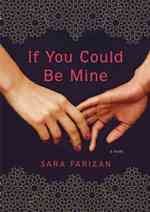 What extremes would you go to in order to be with the one you love, especially if your love is considered criminal? This is one of the essential questions posed by author Sara Farizan in her debut novel, If You Could Be Mine. A few years prior, Sahar was devastated by her mother’s death. Now, at the age of seventeen, Sahar experiences further devastation. Nasrin, her best friend and confidante—a woman who Sahar has loved since the age of six—will soon marry the man of her parents’ choosing. Feeling lost and alone in a country which considers homosexuality to be a crime punishable by death, Sahar struggles to figure out not only how to better ensure she and Nasrin can secretly stay together but also how to survive if they cannot. For Sahar, a sex-change operation is the perfect solution. If she could become a man, then she and Nasrin could legally be together. With the help of her cousin Ali and a transgender community in Tehran, Sahar seeks out a surgeon for the procedure. Yet, she cannot escape the nagging feeling of personal betrayal. Is sacrificing one’s self to help retain the love of another worth it? Can Sahar follow through with the procedure, and even if she does, will Nasrin cancel her arranged marriage? Readers will appreciate both the contemporariness and timelessness of this sensitive and poignant look at identity and love from multiple perspectives.
What extremes would you go to in order to be with the one you love, especially if your love is considered criminal? This is one of the essential questions posed by author Sara Farizan in her debut novel, If You Could Be Mine. A few years prior, Sahar was devastated by her mother’s death. Now, at the age of seventeen, Sahar experiences further devastation. Nasrin, her best friend and confidante—a woman who Sahar has loved since the age of six—will soon marry the man of her parents’ choosing. Feeling lost and alone in a country which considers homosexuality to be a crime punishable by death, Sahar struggles to figure out not only how to better ensure she and Nasrin can secretly stay together but also how to survive if they cannot. For Sahar, a sex-change operation is the perfect solution. If she could become a man, then she and Nasrin could legally be together. With the help of her cousin Ali and a transgender community in Tehran, Sahar seeks out a surgeon for the procedure. Yet, she cannot escape the nagging feeling of personal betrayal. Is sacrificing one’s self to help retain the love of another worth it? Can Sahar follow through with the procedure, and even if she does, will Nasrin cancel her arranged marriage? Readers will appreciate both the contemporariness and timelessness of this sensitive and poignant look at identity and love from multiple perspectives.
—Jennifer M. Graff, The University of Georgia
These reviews are submitted by members of the International Reading Association's Children's Literature and Reading Special Interest Group (CL/R SIG) and are published weekly on Reading Today Online.